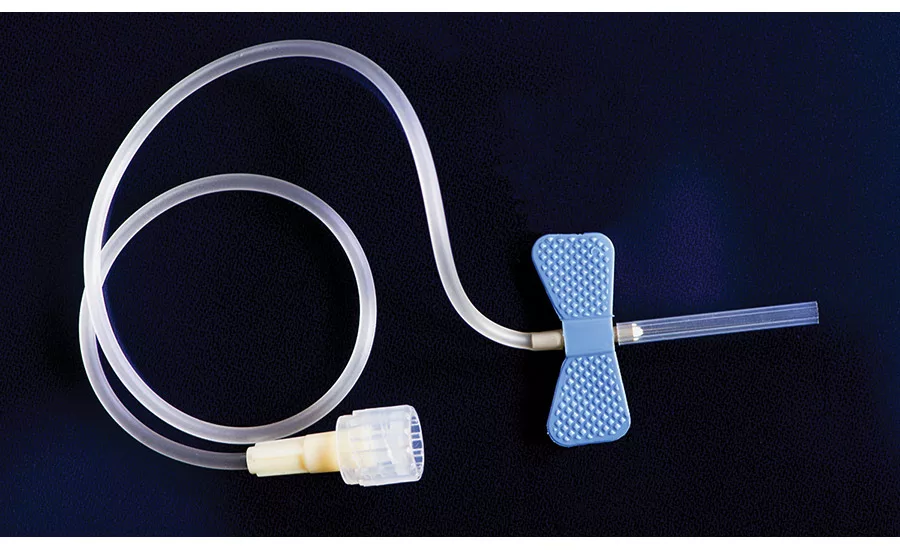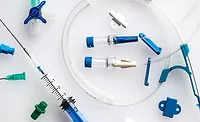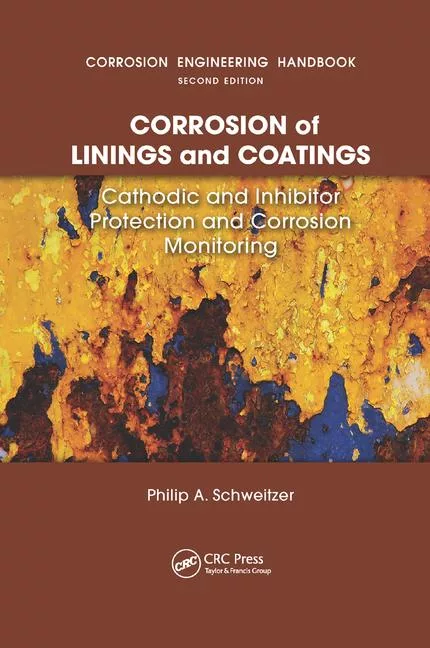Performance Testing of Hydrophilic Coatings on Medical Devices
It is vital to choose the right testing methods to create certainty and predictability in the manufacture and use of hydrophilic coatings for implantable medical devices.


Having a piece of plastic or metal inserted into your body is never going to feel like a warm blanket wrapping around you, but it is possible to make sure that these vital instruments are doing their job while not causing any damage or unnecessary pain in the process. Surface engineering is key for medical devices like tubing, catheters, and stents that are implanted in the human body.
The role of lubricious, hydrophilic coatings on the surface of implantable medical devices is to provide this pain- and damage-reducing service. Manufacturers of these devices are far removed from the actual use of the medical products in the surgery rooms and hospitals. However, they are looking for better ways to control the performance of the coatings so that everyone involved can be completely assured that:
- The coatings are sufficiently applied and uniformly present on the surface
- The coatings will effectively allow bodily fluids (such as blood) to flow and wick over the implanted device or tubing
- The coatings will have a long lifespan that will not diminish the device’s effectiveness or reduce the comfort of the patient while in use
- All performance concerns that fall under the standards required by oversight groups are met
Several tests can be used to create certainty and predictability in the manufacturing process of these devices when it comes to ensuring the presence and performance of coatings for patient comfort and safety. As a part of the testing regimens that medical devices go through to document their performance and reliability, testing is performed for:
- Materials biocompatibility
- Sterility of any materials that will make contact with the patient
- Pyrogenicity, which looks at the endotoxin and other pyrogen levels on material surfaces that can cause infections in the patient
- Packaging and storage shelf life to ensure that sealed medical devices will stay sterile and usable inside their packaging until the time they are deemed to be expired
- Non-clinical testing of things like the tensile strength of joints, size verification, and kink resistance to make sure guidewires don’t bend and kink when being used (tests scrutinize devices to determine how well they’ll live up to the demands placed on them in actual use)
Each aspect of non-clinical bench testing has a significant impact on the effectiveness of the device, but the consequences of coating failures can be truly catastrophic. The U.S. Food and Drug Administration (FDA) lays it out like this: “Coating separation (i.e., peeling, flaking, shedding delamination and/or sloughing off) or degradation may adversely impact clinical performance (e.g., result in inflammation at access site, pulmonary embolization, pulmonary infarct, myocardial embolization, myocardial infarct, embolic stroke, cerebral infarct, tissue necrosis, or death).”
Any manufacturing process for devices that will be implanted in a human body should have a documented method of ensuring that it will not cause infection, will not cause the patient undue discomfort or pain, and will not prematurely fail by corroding or falling apart. Part of ensuring that medical devices meet requirements is to test for coating integrity and lubricity, which involves direct examination of the application, the strength of the bond to the surface, and the hydrophilicity of the coating.
It’s extremely important to control all factors that influence the coating integrity, including the composition of the coating, the application/curing of the coating, and the quality of the surface prior to coating application. When these are controlled and the process is not merely validated in the research laboratory but includes production-level verification, risks are minimized and manufacturers can move forward with certainty that each device is coated properly.
Medical device manufacturers go through an intensive process validation procedure when they set up a new production sequence to gain approval for their process. One of the reasons for this extensive pre-production process is to build a production flow that is so well designed that it inevitably results in products that fulfill all necessary requirements.
Even though that sounds absolutely wonderful, it is an arduous and expensive process. Manufacturers are always looking for ways to improve their production-level process controls that can verify the product at various stages of production. More than just performance testing, this is continuous process monitoring and quality control. A difficulty for manufacturers is implementing process controls that correlate to testing done in the development lab that also is non-destructive (in this case, preserves the sterility of the device).
Contact Angle Measurement
Antithrombogenic coatings are typical of most surface engineering processes in that they don’t simply alter the surface’s thrombogenicity (tendency to stimulate blood clotting), but they also simultaneously and significantly alter other measurable properties, such as surface energy (or wettability). This means that a simple contact angle measurement can often be used to determine the presence and uniformity of a coating.
Contact angle measures the wettability of a surface, which is another way of saying how hydrophilic a surface is. Contact angle also provides a rapid and quantitative measure of uniformity. Inconsistent contact angles over the entirety of a surface indicates that the coating has not been uniformly applied.
In research and development laboratories, contact angles are typically measured using a benchtop goniometer. A planar, smooth sample is placed on a stage, and a drop of liquid is gently placed on the surface via a syringe to create what is called a sessile drop. The contact angle is then measured from a side view of the drop. The measurement is frequently sensitive to a single molecular layer and correlates directly to cleanliness, surface treatment level, adhesion, and uniformity of surface properties.
Portable and automated contact angle measurement devices have recently become available to make this validation method possible directly on actual devices being manufactured. Results are displayed quantitatively as a precise, repeatable contact angle, so no subjectivity is involved.
The digital data stream documents proper surface conditions (e.g., cleanliness, treatment level, and presence and uniformity of a coating) and can be used for closed-loop process control. Since this is a legacy method that manufacturers are familiar with from R&D, portable, rapid, and automated contact angle measurements integrated into manufacturing can be key in bridging the gap between the laboratory and the production line.
To get coatings to adhere to a device’s surface, the material needs to be cleaned and the surface must be activated in a repeatable manner. Surface cleanliness (as it relates to coating adhesion) affects the chemical compatibility between the material surface and the coating. To make the two more compatible, the surface is washed and treated to clean off residues and to make the surface reactive and ready to bond to the coating. With medical devices, an aqueous wash process and/or a plasma treatment step may be needed to create a surface to which a coating will tenaciously bond.
Contact angles are a direct and quantitative measurement of the surface quality before and after cleaning and treatment, and quantitatively track the changes that occur during those procedures. Measuring and controlling the wetting properties of a surface before and after any cleaning or treatment process ensures the bondability of the surface to any subsequent coatings.
Wettability and Lubricity
One of the most important characteristics of medical device coatings designed for use within the human body is the coatings’ hydrophilic nature. A hydrophilic coating will have an extremely low or even zero contact angle because liquids spread out completely on the surface.
This wettability provides for lubricity: the bound aqueous film is a wonderful biocompatible lubricant. This reduces friction, allowing for comfort and ease of insertion and removal. Lubricity is quantified by the coefficient of friction and can be measured by what is known as a pinch test, where the force to pull a coated device through the jaws of a clamp is measured.
Coatings are developed in part using clinical performance tests with animals to understand the safety and effectiveness of the coatings. These tests are of course not suitable for manufacturing process control and quality assurance. Other mechanical tests include the previously mentioned pinch test and the sliding friction test, where a plate of known mass is slid over the surface of the material being tested. The force needed to overcome the friction produced by the clamps or plate divided by the clamp force or slider mass is the coefficient of friction.
However, these are cumbersome tests that are not practical for manufacturing process control, either. It turns out that contact angle measurements correlate well to coefficient of friction testing and can enhance or replace these other testing methods for rapid, quantitative quality and process control in manufacturing.
Thrombogenicity
Another important characteristic of medical device surfaces is thrombogenicity. For example, PICC lines used to administer chemotherapy and medications sometimes need to remain in the body for days or weeks, and they need to be unobtrusive during their stay. Lubricious coatings improve the ease of insertion and removal, but these coatings must also be antithrombogenic to prevent blood coagulation.
Clotting is preceded by adsorption of fibrinogen. One way to evaluate the antithrombogenic nature of a surface is to expose it to radioactive fibrinogen and see how radioactive the surface becomes. A high count on the assay indicates that a lot of fibrinogen is adsorbing onto the surface and is indicative that a lot of clotting would occur. This shows that the functional coating is either not present, not uniform, or doesn’t have the desired properties.
This is typical of an assay that may be very effective for process development but is too slow to perform and too expensive for ensuring that a coating is being properly and effectively applied during manufacture. In the course of altering the thrombogenicity of a surface, these coatings also alter the surface wettability.
Rapid contact angle measurements flag the coatings’ presence and uniformity while providing a convenient way to document the proper application and desired properties of the coatings on difficult-to measure devices such as small catheters. For reliable, repeatable process control, contact angle measurements are a powerful and efficient way to scale up from process design and achieve full product verification.
For more information, contact the author at pgeary@btglabs.com or visit www.btglabs.com.
Looking for a reprint of this article?
From high-res PDFs to custom plaques, order your copy today!








